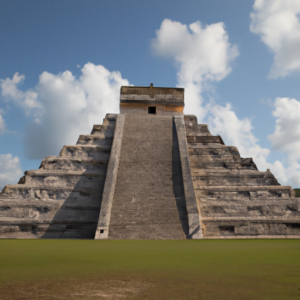In “Promoting Conservation: How Cruisers Can Support Local wildlife and habitat Protection,” you will discover the importance of conservation initiatives and how they can make a positive impact on local wildlife and habitats. This article aims to educate how cruisers can support local wildlife in the various efforts implemented to protect these precious ecosystems and provides practical ways for them to contribute and support these initiatives during their visit. By understanding the significance of conservation, cruisers can actively be a part of preserving these natural wonders for future generations to enjoy.
Table of Contents
ToggleHow Cruisers Can Support Local Wildlife
I. Understanding Local Wildlife and Habitat
A. Researching local fauna and flora
Before embarking on your adventures, it is essential to research and familiarize yourself with the local fauna and flora. By understanding the unique species that inhabit the area, you can appreciate their significance and the role they play in the ecosystem.
B. Learning about native species and their habitats
Take the time to learn about the native species and their habitats. This knowledge allows you to gain a deeper understanding of the intricate relationships within the ecosystem. By knowing where the species thrive, you can make informed decisions that minimize your impact on their habitats.
C. Identifying endangered or vulnerable species
Identifying endangered or vulnerable species is crucial in prioritizing conservation efforts. By familiarizing yourself with these species, you can take extra precautions to avoid disturbing their habitats and contribute to their protection.
D. Understanding the importance of habitat preservation
Understanding the importance of habitat preservation is key to protecting local wildlife. Habitats provide essential resources and shelter for many species. By preserving these habitats, you are ensuring a sustainable future for the wildlife that depends on them.
II. Minimizing Impact on Wildlife and Habitat
A. Following responsible boating practices
When out on the water, it is important to follow responsible boating practices to minimize your impact on wildlife and habitat. This includes maintaining a safe speed, avoiding sensitive areas, and properly disposing of waste to prevent pollution.
B. Respecting no-entry zones and restricted areas
No-entry zones and restricted areas are put in place to protect delicate ecosystems and endangered species. By respecting these areas, you are ensuring their preservation and minimizing disturbance to wildlife and their habitats.
C. Avoiding disturbance to breeding or nesting grounds
Breeding and nesting grounds are critical for the survival of many species. It is vital to avoid disturbing these areas, especially during sensitive times such as the breeding or nesting season. By giving wildlife the space they need, you are allowing them to thrive.
D. Minimizing light and noise pollution
Light and noise pollution can have a significant impact on wildlife behavior and habitat. By minimizing light pollution, such as using low-impact lighting, and reducing noise levels, you can help preserve the natural environment for the local species.
E. Understanding the impact of anchor damage and alternatives
Anchor damage can cause severe harm to fragile habitats, such as coral reefs or seagrass beds. Understanding the impact of anchor damage and exploring alternative anchoring techniques, such as using mooring buoys or designated anchorages, can help protect these vulnerable ecosystems.
III. Supporting Local Conservation Organizations
A. Researching and identifying local conservation groups
Take the time to research and identify local conservation groups in the area you are visiting. These organizations play a vital role in protecting and preserving wildlife and their habitats. By supporting them, you contribute to their efforts and help ensure the long-term sustainability of the ecosystem.
B. Learning about their projects and initiatives
Once you have identified local conservation groups, take the initiative to learn about their projects and initiatives. Understanding their goals and methods allows you to align your efforts and support their specific conservation needs.
C. Donating to or volunteering with these organizations
Donate to or volunteer with local conservation organizations to directly contribute to their important work. Your financial support or time can make a significant difference in their conservation efforts and contribute to the overall protection of wildlife and habitats.
D. Participating in community events and fundraisers
Participating in community events and fundraisers organized by local conservation groups is a fantastic way to show your support and contribute to their cause. By getting involved, you become an active participant in the conservation community, making a positive impact on the local environment.
E. Spreading awareness through social media and word-of-mouth
Spread awareness about the importance of wildlife and habitat protection by sharing information on social media and through word-of-mouth. By using your platform to educate others about the unique ecosystem in the area, you inspire others to take action and contribute to conservation efforts.
IV. Responsible Wildlife Viewing and Photography
A. Understanding ethical guidelines for wildlife interaction
Before engaging in wildlife viewing or photography, it is crucial to understand and adhere to ethical guidelines. These guidelines ensure that your interactions with wildlife are respectful, safe, and do not cause harm to the animals or their habitats.
B. Maintaining a safe distance and using binoculars or zoom lenses
Maintaining a safe distance from wildlife is critical to their well-being and your safety. Use binoculars or zoom lenses to get a closer look without intruding on their space. Remember that proximity can cause stress to animals and disrupt their natural behaviors.
C. Avoiding feeding or touching wildlife
Feeding or touching wildlife may seem harmless, but it can have severe consequences. Human food can be harmful to animals, and touching them can lead to stress or the spread of diseases. It is best to observe wildlife from a distance without interfering directly.
D. Respecting seasonal restrictions and migration patterns
Respecting seasonal restrictions and understanding migration patterns is essential for responsible wildlife viewing. Many species rely on specific habitats during certain times of the year. By respecting these restrictions, you can minimize disturbance and ensure their successful migration or breeding.
E. Sharing photos responsibly to inspire conservation
When sharing wildlife photos, do so responsibly to inspire conservation. Accompany your photos with educational captions that emphasize the importance of protecting wildlife and their habitats. By raising awareness through your photos, you can encourage others to appreciate and safeguard these fragile ecosystems.
V. Sustainable Fishing and Marine Activities
A. Educating cruisers on sustainable fishing practices
It is crucial to educate cruisers on sustainable fishing practices to promote responsible fishing in the area. By understanding the impact of their actions and adopting sustainable techniques, cruisers can minimize the negative effects on marine life and help preserve the balance of the ecosystem.
B. Promoting catch-and-release techniques
Promote catch-and-release techniques among cruisers to conserve fish stocks. By releasing fish back into their natural habitat, you are ensuring their survival and the sustainability of the fishery.
C. Understanding local fishing regulations and quotas
Educate yourself and other cruisers about local fishing regulations and quotas. Adhering to these rules allows you to fish responsibly and within the limits set to prevent overfishing and protect the diverse marine life.
D. Participating in beach clean-ups and marine debris removal
Participate in beach clean-ups and marine debris removal initiatives to tackle the issue of marine pollution. By actively working to remove debris from local beaches and waters, you are helping to safeguard the environment and protect marine species from the harmful effects of pollution.
E. Encouraging responsible snorkeling and diving practices
Encourage responsible snorkeling and diving practices among cruisers. Emphasize the importance of not touching or harassing marine life, protecting coral reefs, and avoiding damaging or taking anything from underwater habitats. By practicing responsible water activities, you are contributing to the conservation of marine ecosystems.
VI. Supporting Habitat Restoration Projects
A. Learning about local habitat restoration initiatives
Take the initiative to learn about local habitat restoration projects in the area. These initiatives aim to revitalize and protect habitats that have been degraded or destroyed. By understanding these projects, you can actively support restoration efforts.
B. Participating in reforestation or beach restoration efforts
Participate in reforestation or beach restoration efforts to help restore damaged habitats. These projects often rely on community involvement, and your contribution can make a significant impact in revitalizing these areas.
C. Assisting in invasive species removal
Invasive species pose a significant threat to native flora and fauna. Assist in invasive species removal efforts to control their spread and protect the local biodiversity. By actively participating in these removal initiatives, you help create space for native species to thrive.
D. Volunteering for coral reef or mangrove restoration projects
Coral reefs and mangroves are crucial habitats for many marine species. Volunteering for coral reef or mangrove restoration projects allows you to contribute to the rehabilitation of these fragile ecosystems. Your efforts can help rebuild their resilience and preserve the biodiversity they support.
E. Supporting research and monitoring programs
Support research and monitoring programs that focus on the local wildlife and habitat. By providing financial support or volunteering your time, you enable scientists and conservationists to gather vital data that informs conservation strategies and ensures the long-term protection of the area.
VII. Engaging with Local Communities
A. Visiting local community centers and visitor centers
Visit local community centers and visitor centers to learn more about the area’s cultural and environmental significance. These centers often provide valuable information about the relationship between the community and nature, offering insights into sustainable practices and conservation initiatives.
B. Learning from indigenous communities about their relationship with nature
Indigenous communities often possess a wealth of knowledge about the natural world. Take the time to learn from them about their traditional practices and wisdom regarding nature. By doing so, you gain a deeper appreciation for the land and its inhabitants.
C. Supporting local eco-tourism initiatives
Support local eco-tourism initiatives that prioritize sustainable practices and responsible engagement with the environment. By choosing eco-friendly tour operators or services, you support businesses that prioritize conservation and contribute to the local economy.
D. Purchasing sustainable and locally-made products
When shopping for souvenirs or supplies, make an effort to purchase sustainable and locally-made products. By doing so, you support local artisans and reduce the environmental impact of your purchases. Additionally, choosing sustainable products helps promote eco-conscious consumption.
E. Encouraging dialogue and collaboration for conservation
Engage in dialogue and collaboration with the local community to foster a sense of shared responsibility for conservation efforts. By discussing the importance of protecting wildlife and habitat, you encourage others to take an active role in preserving their natural heritage.
VIII. Reporting Environmental Concerns
A. Documenting environmental violations or damages
If you witness any environmental violations or damages, make sure to document them accurately. Take photographs or videos and make detailed notes to provide evidence of the issue. This documentation can be crucial in reporting the incident accurately.
B. Reporting incidents to local authorities or conservation agencies
Report any environmental incidents you encounter to local authorities or conservation agencies. They have the knowledge and resources to address the issues effectively. By reporting these incidents, you ensure that appropriate actions are taken to mitigate the damage and enforce environmental regulations.
C. Taking part in citizen science programs
Participate in citizen science programs to contribute to scientific research and data collection. These programs engage the public in collecting valuable environmental information, which is essential for understanding and addressing various conservation issues.
D. Assisting in data collection and research efforts
Assist in data collection and research efforts by volunteering your time or skills. By actively participating in these efforts, you support ongoing research on local wildlife and habitat, leading to a better understanding of conservation needs and the development of effective strategies.
E. Participating in environmental impact assessments
Participate in environmental impact assessments when they are conducted for proposed development projects. By voicing your concerns and providing input, you ensure that potential environmental impacts are thoroughly evaluated, and appropriate measures are taken to protect wildlife and their habitats.
IX. Environmental Education and Awareness
A. Promoting conservation education programs
Promote conservation education programs that focus on wildlife and habitat protection. These programs play a critical role in raising awareness and fostering a sense of responsibility towards the environment.
B. Supporting local schools and education initiatives
Support local schools and education initiatives by providing resources or volunteering your time. By engaging with young minds and promoting environmental education, you inspire the next generation to appreciate and protect nature.
C. Organizing workshops or talks on wildlife and habitat protection
Organize workshops or talks on wildlife and habitat protection for cruisers and the local community. Share your knowledge and experiences to educate others and inspire action towards sustainable practices and conservation efforts.
D. Creating informational brochures or guidebooks for cruisers
Create informational brochures or guidebooks for cruisers that highlight the importance of wildlife and habitat protection. Include tips on responsible boating practices, wildlife viewing guidelines, and local conservation resources. By providing this information, you empower others to make informed choices that benefit the environment.
E. Encouraging children and families to appreciate and protect nature
Encourage children and families to appreciate and protect nature through interactive activities and outdoor experiences. By fostering a love for the environment in young minds, you help shape future stewards who will prioritize wildlife and habitat protection.
X. Walk the Talk: Sustainable Practices Onboard
A. Recycling and waste management
Implement recycling and waste management practices onboard to minimize your environmental footprint. Separate recyclables, reduce waste generation, and dispose of any waste properly when on land.
B. Conserving water and energy
Conserve water and energy to reduce your impact on the environment. Fix any leaks, use water-saving devices, and practice energy-efficient habits aboard your vessel. By being mindful of your resource consumption, you contribute to the overall sustainability of your journey.
C. Using eco-friendly cleaning products
Choose eco-friendly cleaning products that have minimal impact on the environment. Look for biodegradable alternatives that do not harm marine life or contribute to water pollution.
D. Properly disposing of hazardous materials
Dispose of hazardous materials, such as batteries or chemicals, responsibly. Follow local regulations to ensure these materials are handled correctly and do not pose a threat to wildlife or their habitats.
E. Choosing sustainable and locally-sourced provisions
When provisioning for your journey, choose sustainable and locally-sourced provisions whenever possible. This supports local businesses, minimizes transport emissions, and reduces the ecological footprint associated with the production and distribution of goods.
By following these comprehensive guidelines, you can actively contribute to the protection and preservation of local wildlife and habitat while enjoying your cruising adventures. It is through collective efforts and a genuine commitment to conservation that we can ensure a sustainable future for our natural world. Remember, even the smallest actions can make a significant difference in supporting local wildlife and habitat protection.





